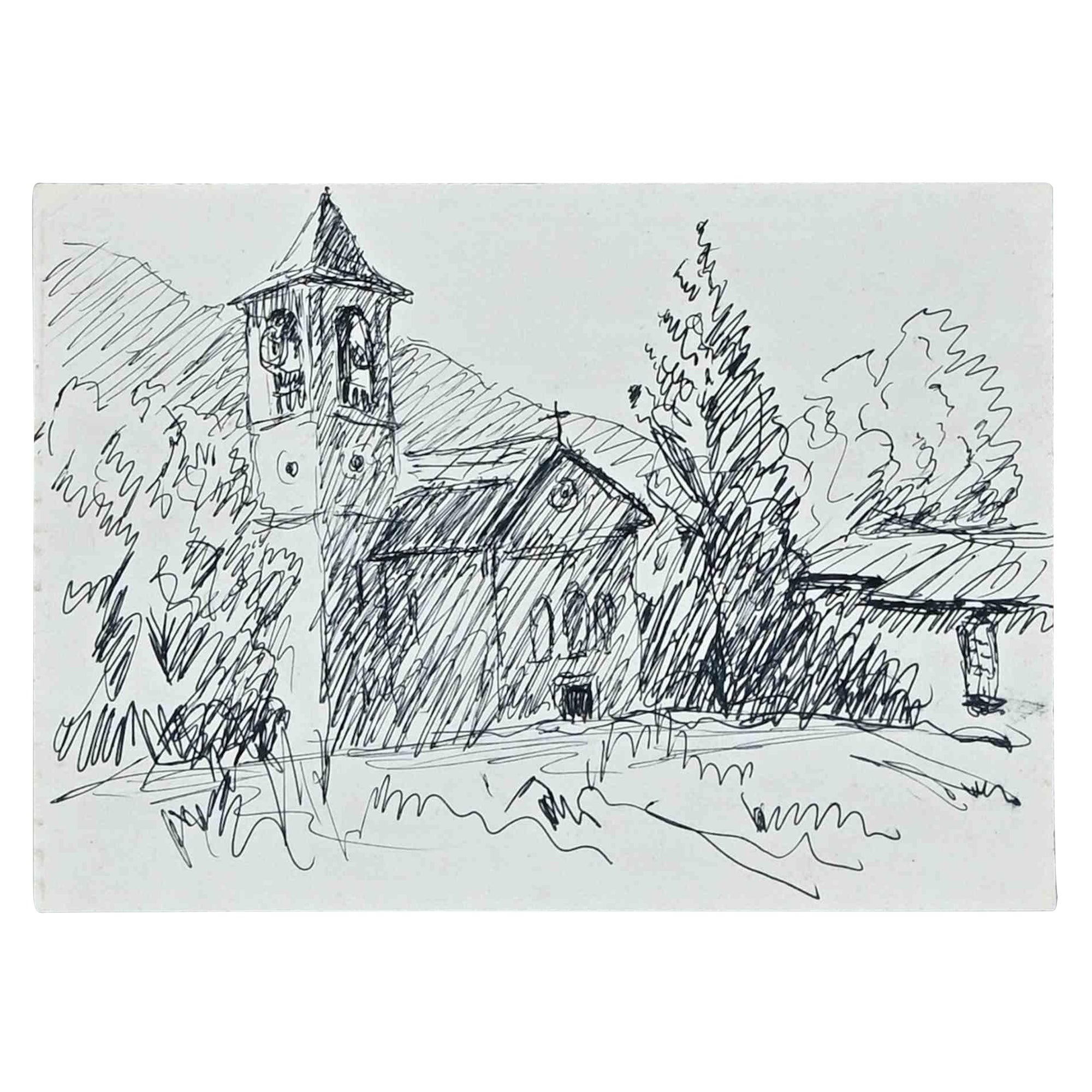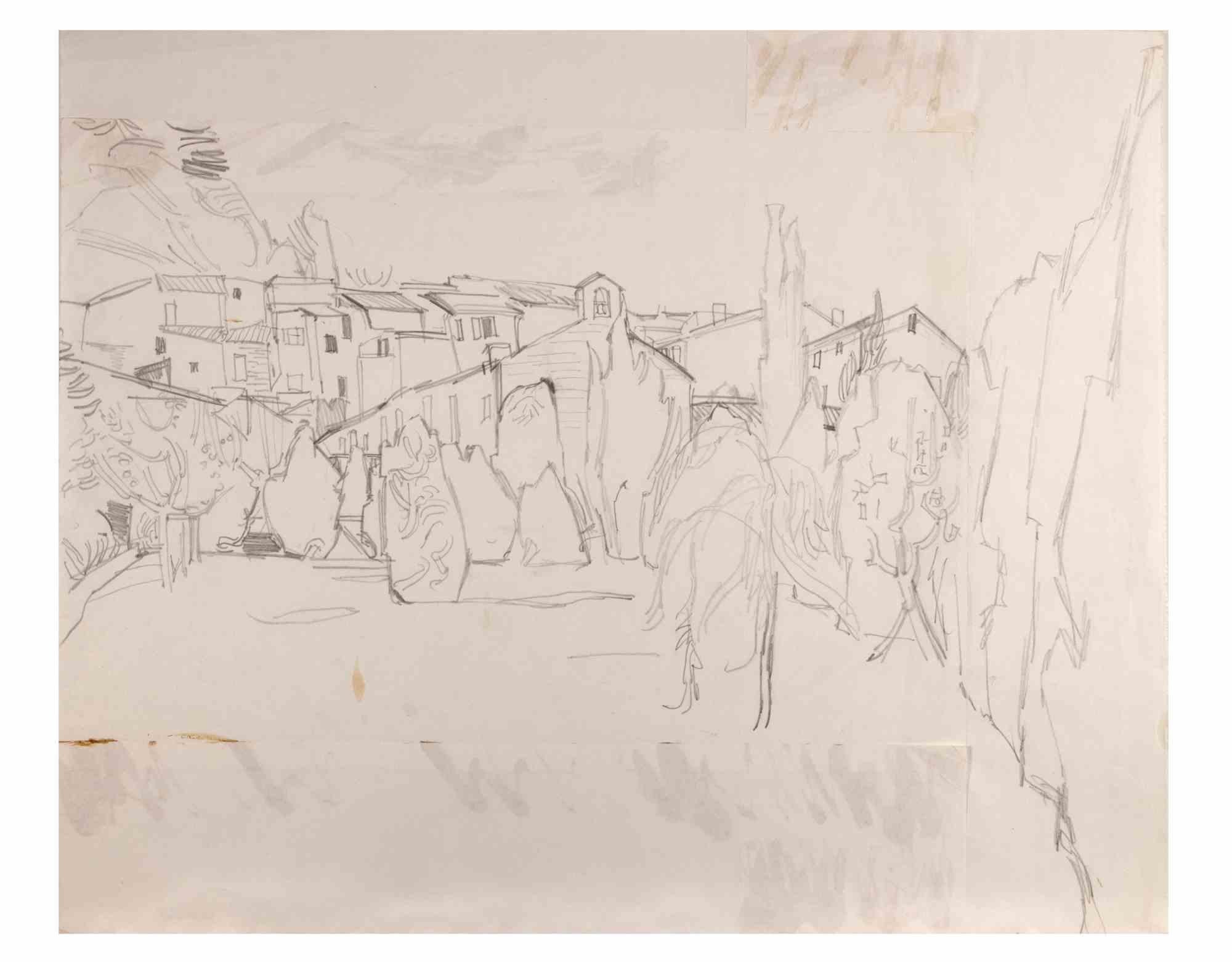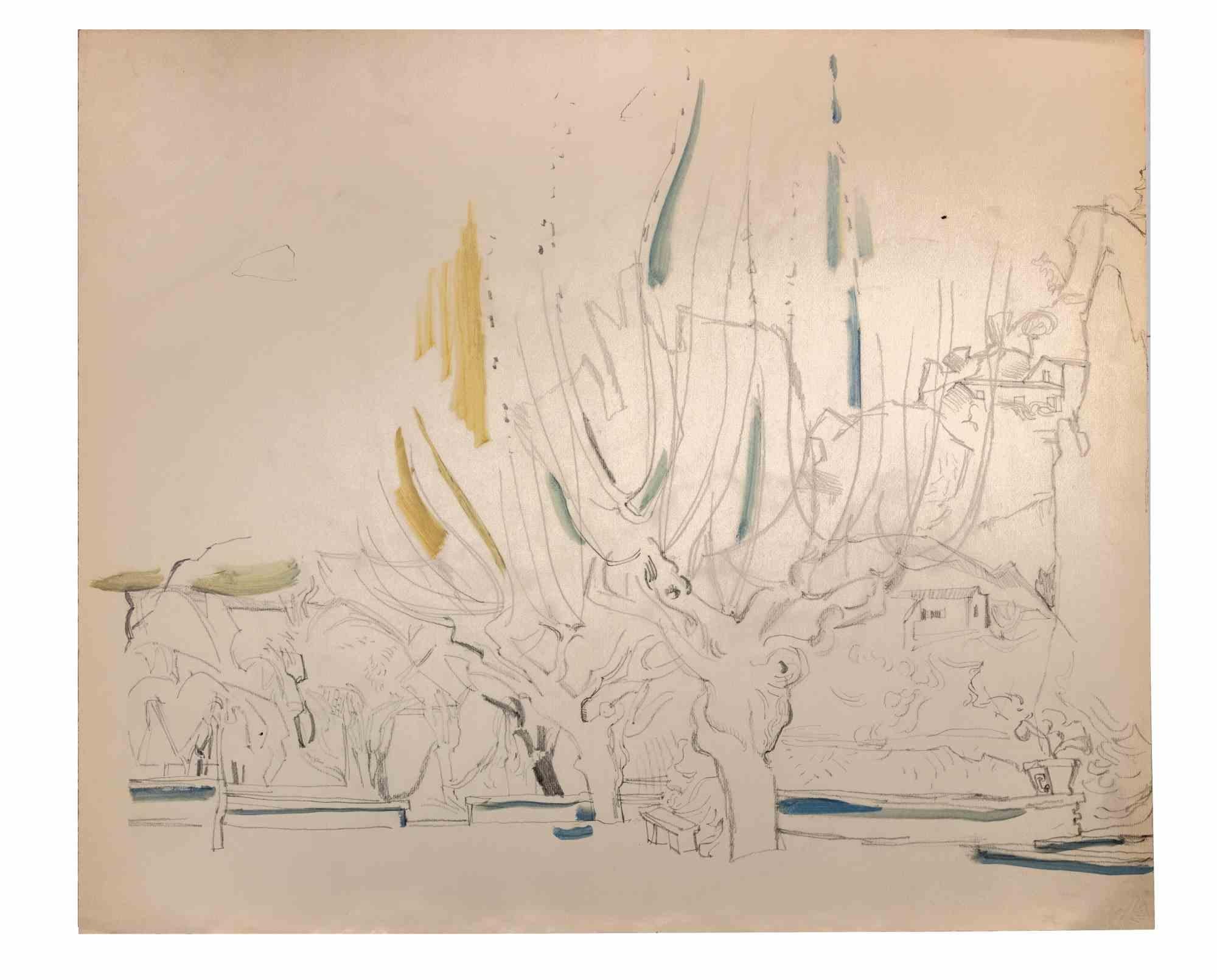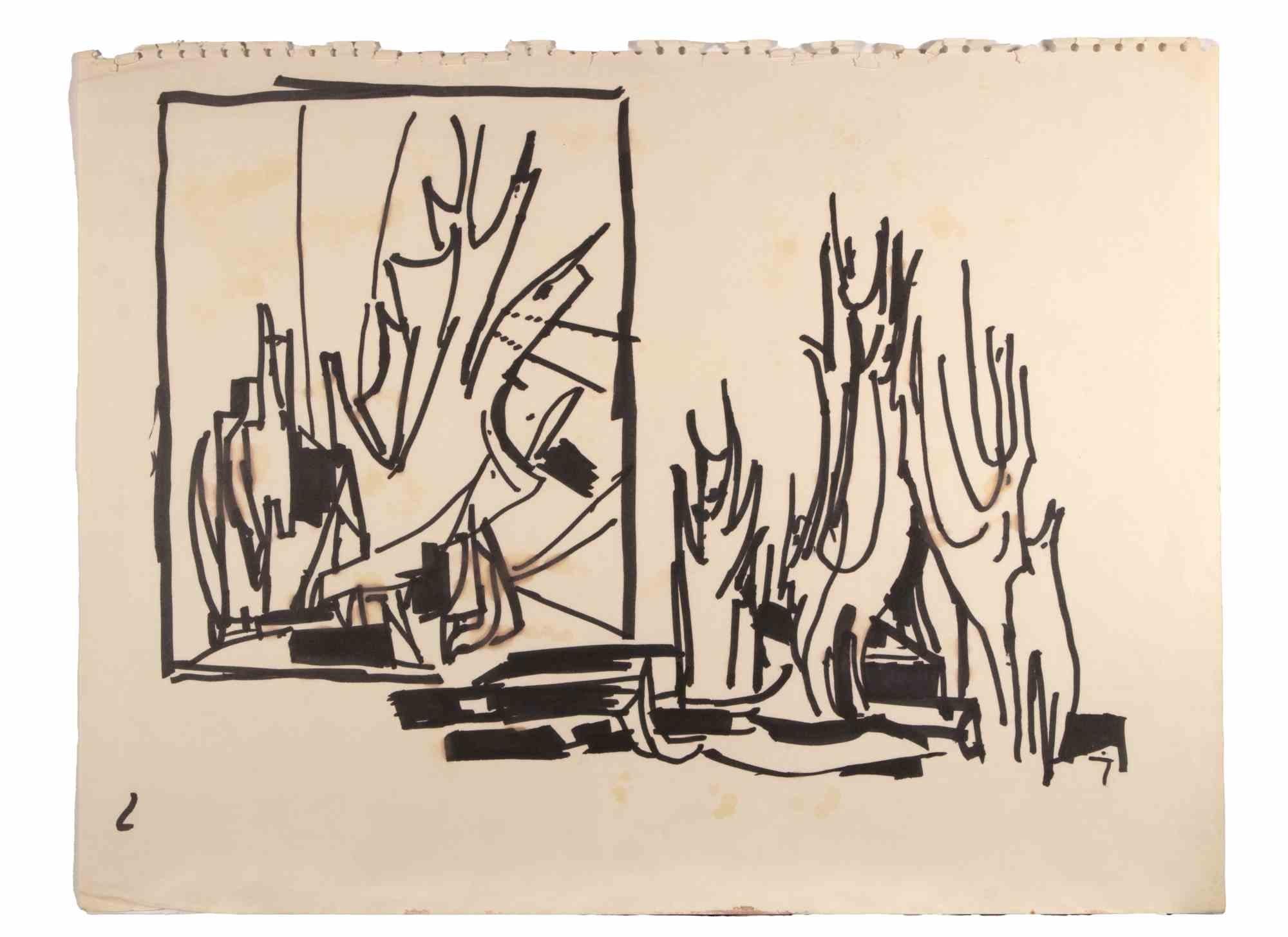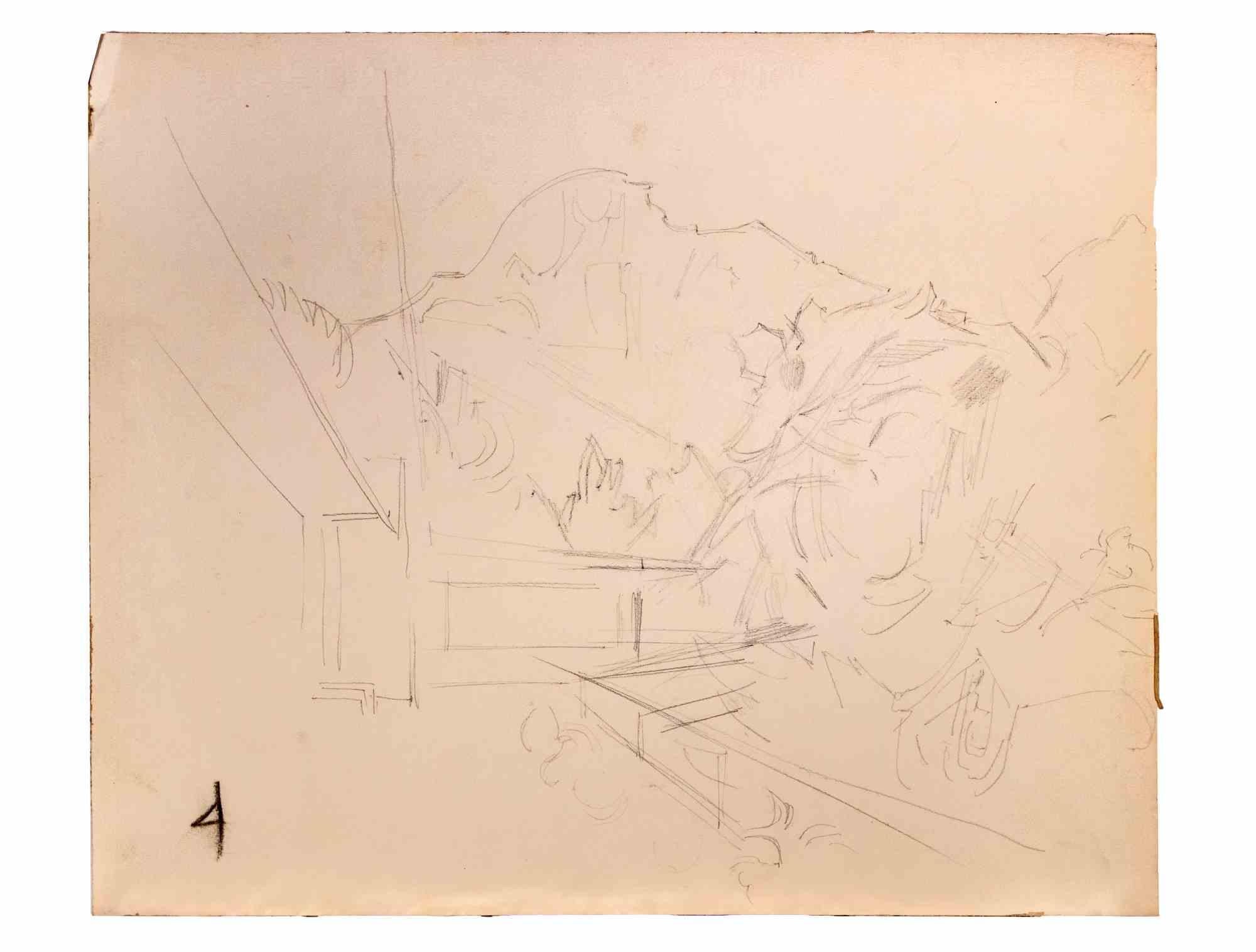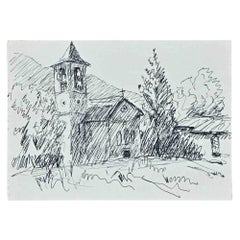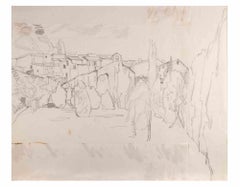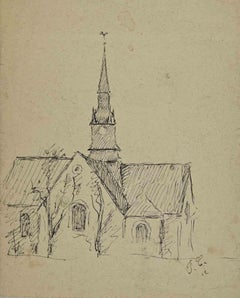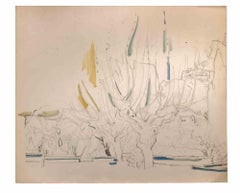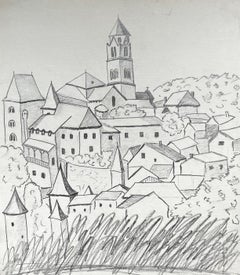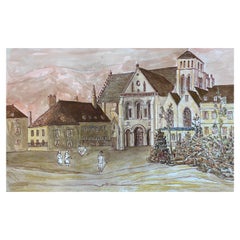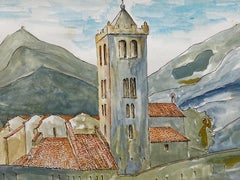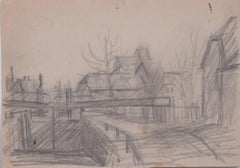Items Similar to The Church - Drawing By Reynold Arnould - 1970
Want more images or videos?
Request additional images or videos from the seller
1 of 5
Reynold ArnouldThe Church - Drawing By Reynold Arnould - 19701970
1970
$238.58
£176.39
€200
CA$328.17
A$364.78
CHF 191.21
MX$4,454.81
NOK 2,387.13
SEK 2,245.84
DKK 1,522.60
About the Item
The Church is a Pencil Drawing realized by Reynold Arnould (Le Havre 1919 - Parigi 1980).
Good condition on a white paper.
No signature.
Reynold Arnould was born in Le Havre, France in 1919. He studied at l'École des Beaux-Arts de Le Havre, and won the Grand Prix de Rome in 1939. In 1949, he was the director of an art school in Dallas Texas.
He exhibited at the Salon de Mai, Salon des Tuileries, and at the Salon d'Automne beginning in 1945. He is represented in several museums including Le Havre and Rouen.Arnold's early paintings are Cubist with use of deep colors. Typical subject matter included portraits and scenes of women in modern interiors. He also painted allegorical scenes, still lifes, and later, in the 1950's his work became abstract.
- Creator:Reynold Arnould
- Creation Year:1970
- Dimensions:Height: 11.82 in (30 cm)Width: 10.63 in (27 cm)Depth: 0.08 in (2 mm)
- Medium:
- Movement & Style:
- Period:
- Framing:Framing Options Available
- Condition:Insurance may be requested by customers as additional service, contact us for more information.
- Gallery Location:Roma, IT
- Reference Number:Seller: T-1378651stDibs: LU650311817072
About the Seller
4.9
Platinum Seller
Premium sellers with a 4.7+ rating and 24-hour response times
1stDibs seller since 2017
7,682 sales on 1stDibs
Typical response time: 3 hours
- ShippingRetrieving quote...Shipping from: Grasse, France
- Return Policy
Authenticity Guarantee
In the unlikely event there’s an issue with an item’s authenticity, contact us within 1 year for a full refund. DetailsMoney-Back Guarantee
If your item is not as described, is damaged in transit, or does not arrive, contact us within 7 days for a full refund. Details24-Hour Cancellation
You have a 24-hour grace period in which to reconsider your purchase, with no questions asked.Vetted Professional Sellers
Our world-class sellers must adhere to strict standards for service and quality, maintaining the integrity of our listings.Price-Match Guarantee
If you find that a seller listed the same item for a lower price elsewhere, we’ll match it.Trusted Global Delivery
Our best-in-class carrier network provides specialized shipping options worldwide, including custom delivery.More From This Seller
View AllThe Church - Original Drawing by R. Fontene - Mid-20th Century
Located in Roma, IT
The Church is an Original pen drawing on paper realized by Robert Fontené in the mid-20th Century.
The artwork is in good condition on ivory-colored paper.
Included a Passepartout:...
Category
Mid-20th Century Modern Figurative Drawings and Watercolors
Materials
Pen
Cityscape - Drawing By Reynold Arnould - 1970
Located in Roma, IT
Cityscape is a Pencil Drawing realized by Reynold Arnould (Le Havre 1919 - Parigi 1980).
Good condition on a white paper.
No signature.
Reynold Arnould was born in Le Havre, Fran...
Category
1970s Modern Figurative Drawings and Watercolors
Materials
Paper, Pencil
$357 Sale Price
25% Off
The Church - Drawing by Joseph Alexander Colin - Mid-20th Century
Located in Roma, IT
The Church is a drawing realized by Joseph Alexandre Colin in the Mid-20th Century.
China ink ivory-colored paper
Good conditions with slight foxing.
The artwork is realized throu...
Category
Mid-20th Century Modern Figurative Drawings and Watercolors
Materials
Pencil, Paper
Cityscape - Drawing By Reynold Arnould - 1970
Located in Roma, IT
Cityscape is a Pencil and Watercolour Drawing realized by Reynold Arnould (Le Havre 1919 - Parigi 1980).
Good condition.
No signature.
Reynold Arnould was born in Le Havre, Franc...
Category
1970s Modern Figurative Drawings and Watercolors
Materials
Paper, Pencil, Watercolor
$331 Sale Price
24% Off
Composition - Drawing By Reynold Arnould - 1970
Located in Roma, IT
Composition is a Black Marker Drawing realized by Reynold Arnould (Le Havre 1919 - Parigi 1980).
Good condition on a sheet of a notebook.
No signature.
Reynold Arnould was born i...
Category
1970s Modern Abstract Drawings and Watercolors
Materials
Paper, Permanent Marker
Landscape - Drawing By Reynold Arnould - Mid-20th century
Located in Roma, IT
Landscape is a pencil drawing realized by Reynold Arnould (Le Havre 1919 - Parigi 1980).
Good condition on a yellowed paper.
No signature.
Reynold Arnould was born in Le Havre, ...
Category
Mid-20th Century Modern Landscape Drawings and Watercolors
Materials
Pencil
You May Also Like
1950's Modernist/ Cubist Painting - Drawing Church and houses
By Bernard Labbe
Located in Cirencester, Gloucestershire
French Landscape
by Bernard Labbe (French mid 20th century)
original pencil drawing on artist paper, unframed
size: 11 x 9.5 inches
condition: very good and ready to be enjoyed
prov...
Category
Mid-20th Century Modern Landscape Paintings
Materials
Pencil
$482 Sale Price
30% Off
1950's French Modernist/ Cubist Drawing - Landscape Of Church In French Town
Located in Cirencester, Gloucestershire
French landscape
by Bernard Labbe (French mid 20th century)
Original watercolour/ gouache painting on artist paper, unframed
Size: 12.5 x 19.75 inches
Condition: very good and ready ...
Category
1950s Landscape Drawings and Watercolors
Materials
Acrylic
1950's French Modernist/ Cubist Painting - French Town Church
By Bernard Labbe
Located in Cirencester, Gloucestershire
French Landscape
by Bernard Labbe (French mid 20th century)
original watercolour/ gouache on artist paper, unframed
size: 14 x 16.75 inches
condition: very good and ready to be enjoy...
Category
Mid-20th Century Modern Landscape Paintings
Materials
Watercolor, Gouache
$405 Sale Price
63% Off
View of the Village Church, pencil sketch by George Bissill
Located in London, GB
George Bissill (1896-1973)
View of the village church
Pencil sketch
13 x 18 cm
Born in 1896, George Bissill was a British miner, painter and furniture designer. Raised in the mini...
Category
Mid-20th Century Modern Figurative Drawings and Watercolors
Materials
Pencil
Watercolour on Paper by Evelyne Luez, 20th Century.
Located in Saint-Ouen, FR
Watercolour on paper by Evelyne Luez, 20th century.
Watercolour on paper depicting La Chapelle Sainte Catherine in Honfleur, 93 by Evelyne Luez, signed, ...
Category
20th Century French Mid-Century Modern Drawings
Materials
Paper
Prof Sir Albert Richardson PRA Farmhouse 1963 Watercolour Architectural drawing
By Albert Richardson
Located in London, GB
To see our other Modern British Art, scroll down to "More from this Seller" and below it click on "See all from this Seller" - or send us a message if you cannot find the artist you ...
Category
1960s Modern Landscape Drawings and Watercolors
Materials
Watercolor
